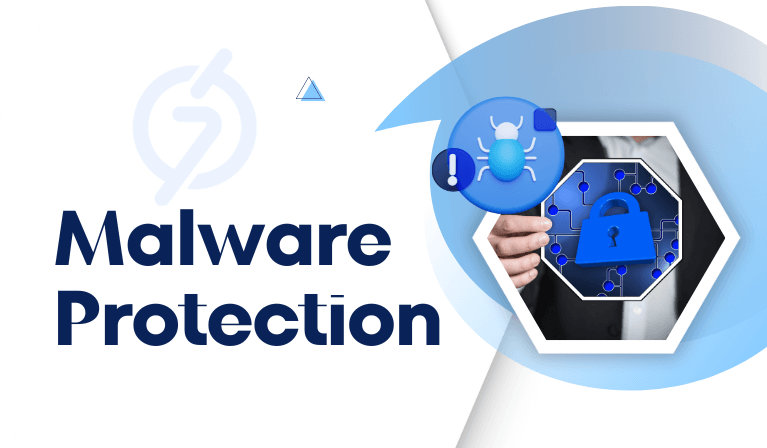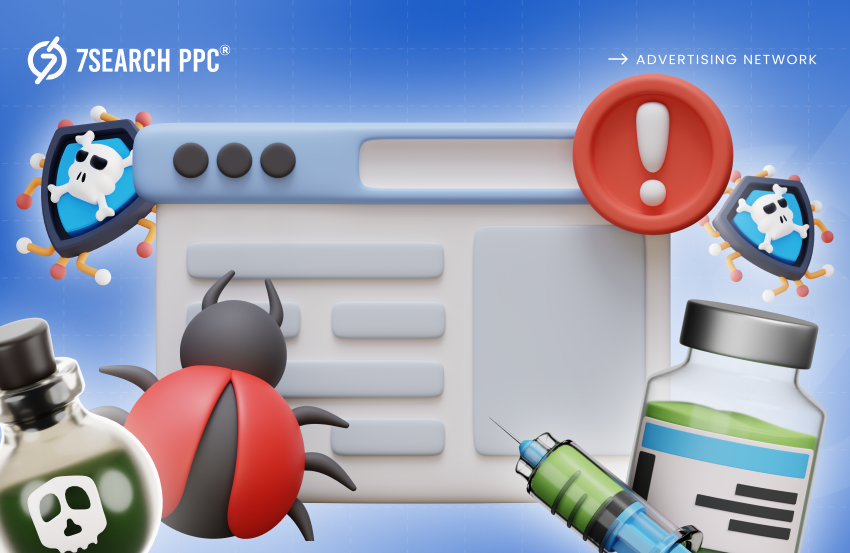The year is 2016, when one of the most prevalent Android malware, HummingBad, is being discovered by Check Point. After being spread through third-party app stores, the malware affected over 10 million victims.
It installed more than 50,000 fraudulent apps every day, displayed 20 million malicious advertisements, and generated at least $300,000 per month in revenue.
HummingBad was so widespread that it was recorded as one of the worst cases of ad injection fraud. But it isn’t the only one. Over the years, many cases of fraud via ad injection have been seen affecting users, publishers, and advertisers globally. Advancements in the tech world have only made this worse and will continue to do so until we find a way to prevent being a victim of it.
With this blog, let us explore what ad injection is, how it works, and how it can be prevented.
What Ad Injection Is
Have you ever come across an ad that just looked out of place? It served no purpose, was not relevant to the content or the user, and looked a tad bit too crooked. Chances are, that ad was injected into your web browser by malware.
Ad injection can be categorized as a type of ad fraud where advertisements are sneaked into places where they shouldn’t be. They clearly don’t have permission from the publishers and obviously don’t pay them for the ad space. It can take quite a lot of forms.
- One, where ads are injected on top of already existing ads, making them appear to be the original one.
- Two, where injected ads replace the original ads entirely.
- Three, when they are injected into webpages where they aren’t required.
Let’s take an example. Suppose you’re navigating through a finance website. There are quite a few banner ads, and most of them either relate to finance or crypto niches. But there’s one that stands out.
It’s not for finance or crypto but for an adult dating website. Definitely not relevant to the content, and probably injected into the browser of the user. This pollutes the website with unwanted (and maybe unsolicited) ads, stealing away its actual value and essence.
Who Does It Affect?
The aftermath of ad injections affects a lot of people, but specifically publishers, advertisers, and visitors.
For visitors, this would mean a poor experience on the website. Imagine seeing an ad that lays flat on top of the actual content. Not only does it hide away what was of actual value to the user, but it can also impose a bigger threat as it works on malware.
For publishers, this results in a loss of ad revenue. Since the unauthorized ads replace the original ones, publishers remain uncompensated for their clicks and impressions. Moreover, the reputation of the website is also hampered if low-quality, offensive ads are being displayed.
For advertisers, it’s their budget being exhausted for nothing. Despite them paying for it, the ads either get blocked or don’t get shown to the correct audience, resulting in wasted ad spend. As a result, the reach, traffic, clicks, and conversions become low. This further distorts the metrics received from such campaigns, resulting in poor planning for future ones.
So to say, ad injections are extremely harmful to the overall health of the digital advertising ecosystem.
How Does It Come Into Being?
Ad injections work in a bit of a sneaky way. It begins when a web user unknowingly installs a browser extension or app that’s packed up with malicious software. It quietly injects unwanted ads into the user’s browser either by replacing the existing ones or showing them in unwarranted places.
Usually, it’s present in tools like PDF converters and browser toolbars that are offered for free to consumers. Developers of the malware extensions are then compensated for it through deals made between them and ad injectors. On every download and click the injected ad gets, the ad injector pays the developer an affiliate fee.
A Widespread Case From 2020
Adrozek was a malware that targeted all the major browsers on Windows and controlled over 30,000 devices per day. Users would unintentionally install the malware through tampered websites, drive-by downloads, and email attachments. The malware would then proceed to add browser extensions and alter the browser settings to display unauthorized ads. For every click the fake ad used to get, scammers would earn affiliate advertising dollars.
While the malware was first detected in May 2020 and reached its peak in August 2020, it was only announced as a threat by Microsoft in December 2020. By this time, it had already affected over 200,000 devices worldwide.

So, What Can Advertisers Do? Any Tips?
Since ad injection happens on the user’s end, there’s little advertisers can do. But surely, there are some tactics that advertisers can use to identify if their ads are victims of ad injections. And then, proceed to take necessary action.
Choose Reliable Ad Networks
The first and foremost tip is to choose reputable ad networks that don’t have any history with ad injection and fraud. Since it’s the ad networks that mediate the programmatic buying process and place ads on relevant publisher websites, they do play a huge role.
What is an Ad Network and How Can It Help You Grow Your Business?
What you can do is choose ad networks that offer complete transparency and have an ad fraud detection system set in place to identify any mishaps. Reputation also matters, so do check the reviews beforehand.
Monitor Regularly
Prevention is always better than cure. In this context, this means detecting ad injection fraud in the early stages and taking necessary actions. Set a baseline of impressions, clicks, and conversions for yourself based on previous campaign performance. Compare it with the performance of every new campaign to check for unusual activities and signs of fraud.
You can also check the quality of traffic coming onto your landing page from the ads. If they aren’t from the demographics or locations you targeted, something could be wrong.
Prioritize Testing
While you’re still new to an advertising network, prioritize testing over everything. See if your campaign results are meeting the baseline standard, and watch out for suspicious drops or hikes. This can help you gauge whether your ads are receiving the right quality of traffic from the right places. If not, switch to another platform as soon as you can to avoid wasting your budget.
Utilize Brand Safety Tools
Brand safety tools are all the hype these days. Instead of speculating whether your ads are reaching people and performing well, you can check them out straight away. Brand safety tools like Brand24, Zefr, and Corsearch allow you to monitor:
- where your ads appear and if they are alongside inappropriate content
- what people are saying about your brand or product
- fake advertisers and publishers trying to sell counterfeit products
This way, you can check whether your ads appear in the right places without being blocked or replaced by any other ad.
Go for platforms with HTTPS
HTTPS or HyperText Transfer Protocol Secure is a protocol that secures communication and data transfer between a website and a user’s web browser. It prevents third parties from injecting ads into web pages without the publisher’s or site owner’s permission. So when you’re working with a website or ad network for advertising, make sure they have implemented HTTPS.
Conclusion
Over the years, the advertising industry has witnessed a constant rise in ad injections. Users might not even know they have installed malware, and advertisers might not even understand this is how their campaigns are being affected negatively.
The bigger challenge, however, is not the detection but the prevention. Since it usually happens on the user’s end, there’s not much publishers and advertisers can do. Ad injection can only be cured when all the parties come together to tackle it collectively. Till then, keep on making minimal efforts. Rely on reputable advertising networks, use brand safety tools, and make sure to monitor ad performance regularly.
Frequently Asked Questions (FAQs)
What is ad injection?
Ans. Ad injections are a type of ad fraud where advertisements are sneaked into places where they shouldn’t be. They either replace the original ads, appear on top of them, or appear in random places on the user’s web browser.
Who does ad injection affect?
Ans. Ad injection directly affects the users (or visitors) of the website by showing them unwanted and irrelevant ads. Indirectly, it affects the publisher’s revenue and advertisers’ budget and metrics.
How does ad injection affect the advertisers?
Ans. Ad injections affect advertisers by blocking their ads from being seen by the right users. Even though they have made the investment, they don’t get back desirable returns, resulting in wasted ad spend. Furthermore, their metrics get distorted, leading to ineffective future planning.
How can advertisers prevent ad fraud?
Ans. Advertisers can prevent ad fraud by relying on reputable and secure ad networks, testing them out for the first few months, using brand safety tools to check where ads appear, and monitoring campaign performances regularly.
What measures can users and publishers adopt?
Ans. To prevent ad injection, users can resort to installing secure software only after reading the policies. They should also take browser warnings like ‘this software is not safe to use’ seriously. Publishers, on the other hand, can use multi-layered security for their websites and monitor regularly.
















![Sports Advertising Campaign Ideas: [2026 Events + Ad Strategies Explained] 7 Sports Advertising](https://www.7searchppc.com/blog/wp-content/uploads/2025/11/Sports-Advertising-680x442.png)

